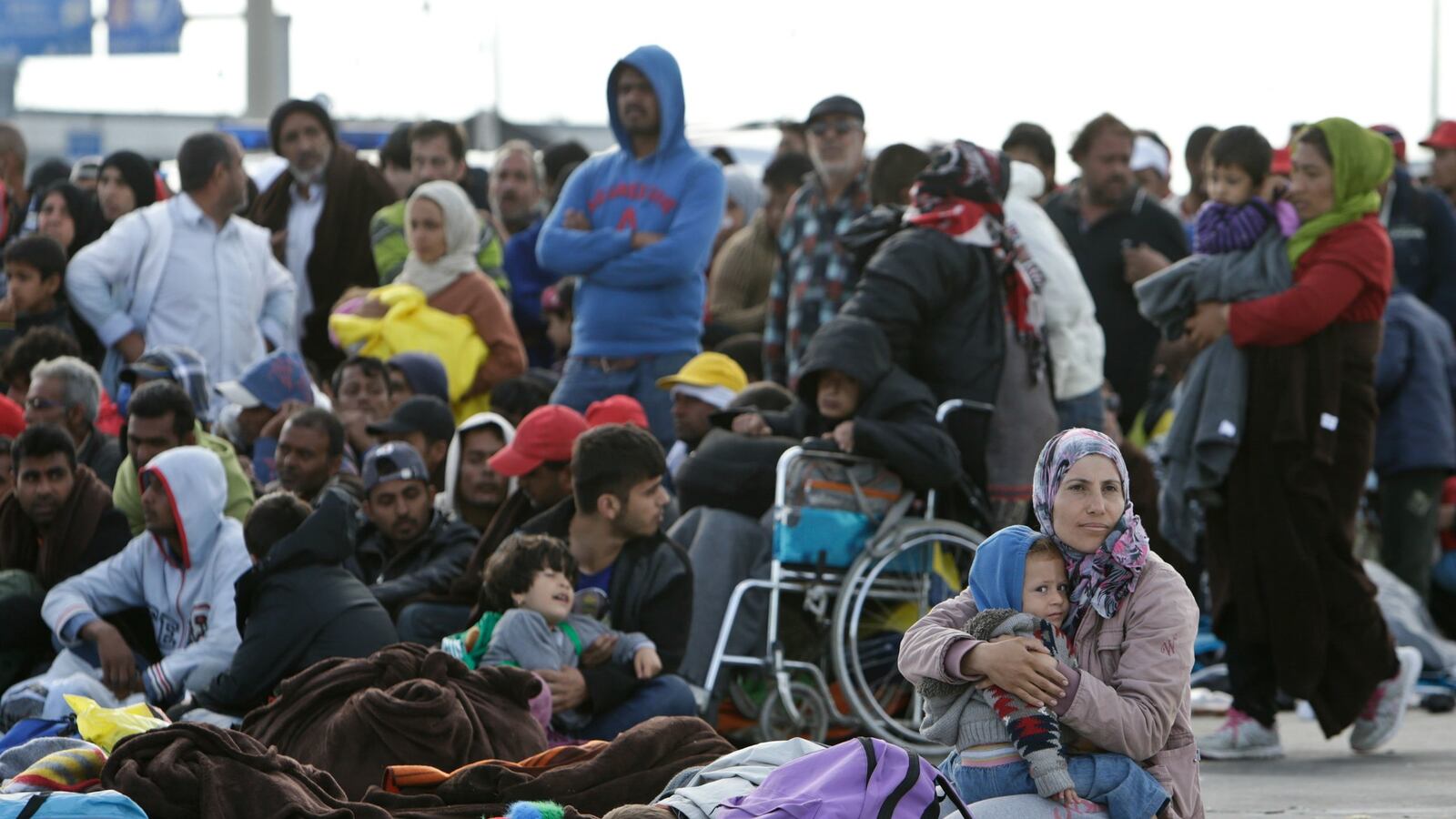The United States will be taking in upwards of 100,000 refugees a year by 2017, Secretary of State John Kerry announced in Berlin on Sunday. Details were scant, but the numbers, up from 70,000 this year, mark an important threshold, and many of those refugees may be Syrians, like those struggling to enter Europe, whose deaths at sea, and suffering on land, have pricked the conscience of the West.
But 2017 is a long, long way away for people adrift in flimsy dinghys or sleeping rough on the Croatian border. What can or should be done right now to begin to address this situation?
To say that the refugee crisis in Europe is out of hand is an understatement. European Union countries, some with the best will in the world, others exhibiting the worst in xenophobia and downright meanness, seem unable to come together with anything approaching a common policy, while allowing appalling chaos and nastiness to prevail.
The United Nations has been virtually silent on this question, apart from the always heroic work of the UNHCR, the UN Refugee Agency. Britain has chosen not to welcome any of the refugees currently languishing in no-man’s lands and forests around border areas (some of which are still riddled with land mines left over from the Balkan wars in the ‘90s). And Gulf and other Arab states continue to allow regional political differences and the internal divisions within Islam to inform their world view, while the richest of them are the most hostile to the idea of accepting any refugees at all.
Let’s make no mistake, time is of the essence as the refugees and migrants get more and more frustrated and fed up: this is a ticking time bomb. We have seen some violence at the frontiers of Europe already; we are likely to see much worse.
So perhaps the way forward would be for the US and the UK to ask NATO to come in and move these people to British and American bases in Europe, and the large, empty NATO bases in Tuzla, Bosnia-Herzegovina, and in Kosovo Those enormous installations have the necessary infrastructure (barracks, school auditoriums, gyms, hospitals and other facilities) to house people in a calmer environment while they are being vetted for possible transfer to the United States or Europe. This would give host countries, and the whole European Union, a little more breathing space.
NATO has not undertaken a humanitarian intervention since the days of Rwanda, Srebrenica and the Kosovo War in the 1990s. Each was unsatisfactory in its own way and led NATO scholars to consider what the organization’s role could be when new conflicts came up. They concluded that it should be viewed not as “the right to intervene" (which could lead all to easily to the rationalization of military interventions on the ground), but rather as the "the responsibility to protect," looking at the issues from the perspective of those seeking or needing support.
“It implies that the primary responsibility rests with the state concerned, and that it is only if the state is unable or unwilling to fulfill the responsibility to protect, or is itself the perpetrator, that it becomes the responsibility of the international community to act in its place,” says former Australian foreign minister and former president of the International Crisis Group, Gareth Evans. And this is not an intervention anyway: this is about NATO planes and buses coming to remove refugees from member or partner states and temporarily resettle them.
This solution has the advantage for the US of circumventing Congress; it allows David Cameron to continue his smug policy of not allowing any further refugees onto British soil; it should massively appeal to NATO member states, including Hungary and Croatia, Greece and Italy, as well as partners, like Austria and Serbia. So, at least in the short term, a win-win.
Although many refugees have indicated they don't want to go to camps, the 11,000 or so who crossed into Austria at the weekend have, in fact, been bussed to holding areas. They are flowing from border to border, often only to find themselves shut out, and the autumn weather is beginning to set in throughout Central Europe. We are on the cusp of some serious unrest.
Organizers of a measure using NATO bases would have to make it clear via social media that this is temporary, while working with the member and partner states to plan for a permanent distribution.
The counter argument is that this solution will only encourage more refugees to risk their lives and join that queue. That is the downside. But the current situation is not sustainable, no one else has come up with a better idea, it seems, and the perfect cannot be the enemy of the good.





